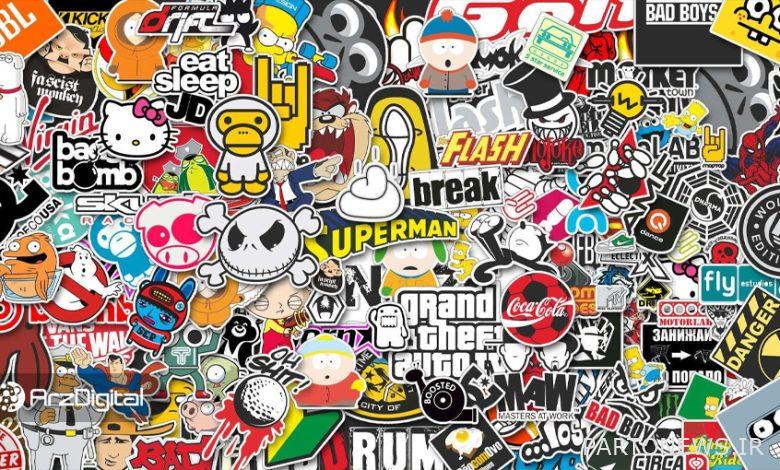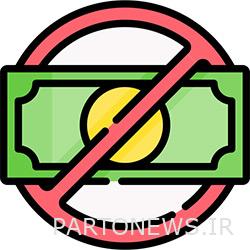How do stable coins become brand support tokens?

Many Iranian and foreign companies use customer loyalty programs to keep their customers loyal. Discount codes, customer club and access to special services are some of the techniques that these companies use to loyal users and customers; However, given today’s standards and the emergence of new technologies such as the Chinese blockchain, it seems that we should expect a revolution in this area soon.
Acceptance of non-replica tokens (NFTs) has acted as a gateway for users to enter the digital currency economy due to their fan base and profit-oriented nature. To better understand this, consider this example: Many fans of the famous American basketball player LeBron James may not know anything about the concept of the Chinese block, but they understand very well why the “The Block” collection card is related to the final. The 2016 prophecy games are sold on the NBA Top Shot website.
However, in the case of brands, the situation is somewhat different. Many predict that in the world of brands, stable coins will play this role and will be the biggest gateway to their market. In this matter to help an essay We will examine the validity of this claim and the reasons for it, collected from the Kevin Telegraph website.
Review customer loyalty programs
Selling to existing customers costs brands less than finding new customers. That’s why more than 90% of companies have a “Customer Loyalty Program”.
Customer loyalty program is one of the most effective ways to increase revenue and customer loyalty; This program refers to the methods that businesses use to retain their customers. These programs include discount cards for future purchases or free services for multiple uses of a service.
The Starbucks Rewards Program is one of the most successful programs in this field, with more than 19 million members, and about 50% of the company’s revenue comes from the points and rewards of this program. Starbucks uses this fun reward system to align with its business goals; In a way that is both valuable for the company and increases interaction with customers.
Customer loyalty programs vary from company to company. Neiman Marcus, for example, uses a very different approach to communicating with people. Niemann Marcus benefits from a dedicated rewards program called InCircle, which has different levels and focuses more on customer status and exclusive use.
Insercle members can use mobile services to reach higher levels. Mobile services help customers do things like plan an exciting vacation or attend a popular event.
An effective loyalty program is not a versatile solution; It is a program that is carefully designed and can do extraordinary things to earn money, interact with customers and retain them.
All this while we are witnessing the evolution of digital assets today; Assets that can help brands in this regard and enable them in any field to provide a unique and memorable experience to their consumers.
Loyalty program rewards and rewards
There is no denying that loyalty and reward programs are an integral part of the consumer-brand relationship; However, these programs also have limitations. Complexity, lack of liquidity and lack of interactivity can be considered as the main obstacles to attracting more customers to loyalty and reward programs. The ambiguity in the rules regarding these programs causes a large amount of value to remain intact.
According to a report published by Clarus Commerce Loyalty Program Design Company, 75% of consumers are interested in being rewarded not only for their purchases, but also for the wide range of activities they perform. This in itself indicates the market’s need for innovation; This innovation creates a great opportunity for brands to transform their business loyalty programs.
Regarding liquidity, the problem is that most points and rewards can only be used in the relevant brand ecosystem; This means that consumers can not use these privileges to buy another company’s products and services.

Of course, some companies, such as the Hilton, Hyatt, and Marriott hotel brands, have made it possible for their concessions to be used somewhat like cash; However, this is only possible during your stay at the hotel, and in most cases, the value of the points is determined differently from their dollar price. Add to that the discounted days and the limited number of rooms that come with a bonus.
Also, because these programs do not interact with each other, the scores are confined to a closed environment. This limits the movement of value. Restrictions on value transfers and a lack of connection between different loyalty programs lead to reduced customer engagement and, in some cases, a loss of credibility.
If points could be spent like cash, then loyalty programs could be much more successful. Although liquidity varies across different loyalty programs, what is clear is that brands that make this change expect to attract the attention of customers by offering as much flexibility as possible in the use of concessions.
Stable brand coins
Branded Stablecoin is a fixed value digital asset created and supported by a brand or group of brands, companies or institutions. Brand stable coins, which can be embedded directly in consumer-specific software, provide brands with a new way to communicate directly with customers and take the market out of the competition.
Because the concept of blockchain and digital currencies are still unfamiliar to most consumers, it is essential to provide an integrated experience for users so that they do not even notice the blockchain technology behind the system.

Brand Stables, which use secure, transparent Distributed General Office (DLT) technology, provide information to brands to find out who their biggest fans are.
These stable coins also encourage customers to stay loyal to the brand and get rewarded in return. Brands can also store users’ purchase records in the Chinese blockchain and allow customers to use their savings in subsequent purchases.
This method is similar to the loyalty score method; But it is less complex, more liquid, and ultimately more practical. Other advantages of this method include eliminating the need for credit cards or allocating profits to customers’ savings in order to encourage them to maintain inventory.
The uneven path of the brand’s stable coins
Although branded stable coins are a step in the right direction, these token reward systems have a kind of centralism that contrasts with the nature of decentralized technology. This centralization stems from the fact that these systems require the presence of a third party in the form of a brand, a bank, or both, in order to achieve one-on-one stability and to bridge the gap between traditional finance and digital currencies.
On the other hand, the strength of this centralism is that it potentially provides a smoother and easier experience for users; So that they no longer have to download different software or adapt to a new trend. However, brands may find themselves in a situation where they have to make a difficult choice between a smooth but focused user experience and a rough but decentralized path.
The last point about brand stable coins that should be considered is the cost of issuing and spending them; This cost can be very expensive due to high transaction fees. If we put the operating, auditing and regulatory costs of the brands themselves, as well as interoperability with traditional banking systems, along with these costs, it can be a major barrier to entry.
The lack of transparency in digital currency regulations adds to these problems. Brands therefore have to choose whether or not they want to make a short-term loss because of the benefits they will receive in the future. These are the crucial choices that brands must make.
Receiving currency instead of points in consumer software is more valuable to them and gives them a sense of power. Many people consider brands as a symbol of identity. For example, if you become an “ambassador” of the Gucci brand, you will receive a Gucci token in exchange for posting positive content on social media with the “GucciCoin” tag.
If your Gucciquin balance reaches a certain amount, you can access special privileges such as attending unique physical events such as a concert or exhibition or joining an online space. You may even have access to certain items that others cannot afford, or you may receive a unique token indicating your position in that collection.
Brand stable coins are a win-win solution for brands and customers and allow consumers to show their support for brands.
The brand’s stable coins are the gateway to an interactive, smooth, high-liquidity future. Perhaps in the not-too-distant future, customers will be able to have a digital wallet full of their favorite brands, forming a global ecosystem that will be the beginning of a mass acceptance of digital currencies.

